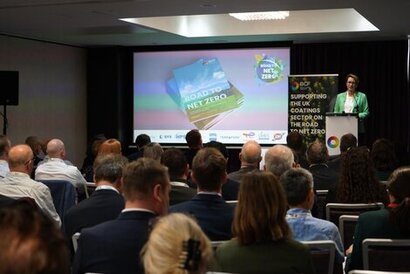
The Roadmap projects, by 2030, a 38 per cent reduction in scope 1 and 2 emissions and illustrates how the industry, which contributes £4 billion a year to the UK economy and employs 14,000 people, will play a major role in enabling the UK to achieve its national legislated Net Zero target.
It lays out how the BCF and its members aim to reach Net Zero, with projected reductions in scope 1 and 2 emissions of 53 per cent by 2035 and 69 per cent by 2040 as waypoints to measure progress against. It goes on to detail four things that need to happen if the overall target is to be met:
Increased energy efficiency, including greater use of renewable energy and the development of low-carbon hydrogen.
Improved resource efficiency, such as the development of new products and technologies including greater uptake of biobased raw materials.
The development of carbon capture, utilisation and storage networks.
Intensive supply chain collaboration and engagement, seeking to reduce scope 3 emissions.
Some of these will require actions from Government and a list of seven recommendations are included at the end of the report and detailed below. Among them are the need for a secure environment for businesses to invest in sustainable infrastructure, clarity and certainty of energy policy in the longer term, and support for SMEs in their journey to reach Net Zero.
Together, the roadmap represents a significant step for an industry whose products are important in the drive for a more sustainable economy. It sets out practical steps that the BCF’s more than 140 members can start taking now to reduce their carbon emissions and highlights key actions manufacturers can take at every stage of the value chain to reach Net Zero.
“The UK paints, coatings, printing inks and wallcoverings sector has always adapted to changing conditions” said Sharon Harte, President of the British Coatings Federation. “Now the next great challenge is to tackle climate change and reach Net Zero as soon as possible, and by mid-century at the latest. This roadmap is a demonstration of our commitment to that cause and will act as a guide to support our members on their individual Net Zero journeys. As part of our journey, it is important to recognise the key role our sector has in in the transition to a more sustainable future: providing products that prolong the life of goods, vehicles and infrastructure; and protecting and enabling renewable energy sources such as wind turbines and solar panels. Our industry will therefore play a major role in enabling the UK to achieve its Net Zero target. We, of course, have our own emissions and those are the focus of this roadmap.”
The roadmap, which builds on the BCF’s 2021 commitment to reach Net Zero by 2050, outlines how the coatings sector intends to tackle its own emissions (scope 1) and those it creates indirectly (scope 2 and scope 3). It also estimates that the largest proportion of carbon emissions, 98 per cent, are linked to members’ supply chains (scope 3) and therefore more difficult to manage. However, as a sign of how important they recognise dealing with upstream and downstream emissions is, BCF is holding a seminar on scope 3 emissions with suppliers on the day of this roadmap’s official launch.
Importantly, the roadmap makes clear that, while any emissions that cannot be eliminated must be balanced by finding ways to absorb an equivalent amount, the sector’s Net Zero strategy must minimise the use of carbon offsets, reserving the practice for unavoidable emissions only.
The document, which has been shared with all members and is available to the public on the BCF website, recognises that different sub-sectors of the BCF’s memberships may need to move at different paces, as their energy needs and challenges are sometimes different.
“This is an important document for us as it is the first time the sector has collectively worked together to quantify the scale of the challenge” added Tom Bowtell, Chief Executive of the BCF. “However, it is just the start of a long journey, and a lot more work will be required across the sector to make Net Zero a reality. Many of our members are already well on the way to reaching their Net Zero target, while others might be grappling with the complexities of getting started. It is our role as the sector’s trade body to show leadership, support members through this process and help those who need more assistance make the necessary progress. That is why we are launching the roadmap at a one-day seminar designed to provide some of that very support, together with a shorter, easier to navigate ‘quick start guide’ for SMEs. Businesses across all industries have a central role to play in delivering emissions reductions and I am pleased that the coatings sector is leading the way in engaging with this challenge. There is no easy fix but in the long term our hard work will be well worth it to secure a greener, cleaner future for our planet.”
The BCF’s baseline for scope 1 and 2 emissions is approximately 100,000 tonnes of CO2(e) and will be used to track the industry’s progress against its Net Zero target. Scope 3 emissions have not been included in the industry’s baseline at this stage due to the complexity of the data and its limitations; however, BCF’s initial estimate is that this number would be in excess of 2.5 million tonnes of CO2(e), representing around 98 per cent of the industry’s carbon footprint. In recognition of the quantity of scope 3 emissions, the roadmap is being launched at a special seminar aimed at helping coatings companies, their suppliers and customers, work together to tackle those scope 3 emissions.
For additional information:

